
 United Kingdom
United Kingdom
About the latest industry news and our offers by subscribing to our newsletters
x United Kingdom
United Kingdom





Bootcamp : Roadmap to Mastering AI in Total Cost Management
This intensive one-day training course is designed for professionals looking to enhance their skills in data analytics and how these are applied in Total Cost Management. Participants will delve into intermediate (and some advanced) techniques and tools used in data analysis, visualization, interpretation, and decision-making
Speaker :


Partners Showcase Setup (Partners Only) @ Great Hall

Registration @ The Main Entrance

Introduction by :
Speaker :


Welcome & Opening Remarks by :
Speaker :


Keynote : The Long Game: Beyond Handover
We obsess over getting projects built, but too often ignore what happens next. Over the next two decades, more than £500 billion will be spent keeping public assets working — and that spend will decide whether services stand up or fall down. This keynote invites controls professionals to cover the whole life of assets, not just capital delivery. It shows how backlog, resilience, and service impact can be built into the same packs that track time and cost, while also connecting investment to place-based priorities, geographic systems, and smarter estate consolidation. By shifting from short-term fixes to long-term value, controls can unlock a market that is always funded, always needed, and essential to the National Infrastructure Strategy. Because an investment isn’t truly delivered until it works, every day, in the places people live and rely on. Programme note: A £500 billion market in asset upkeep is hiding in plain sight. This session shows how controls can move beyond handover to shape resilience, unlock investment, and secure value where it really counts.
Speaker :


Headline Partner Remarks :
Speaker :


Session T1 : AI as an inflection point driving Construction Productivity
During this session we will discuss how AI in construction will drive productivity and efficiencies for both owner and delivery partners . With the current UK gov major projects portfolio alone accounting for 725Bn investment over 10 years and the construction productivity in the UK at 0.3% growth , AI can be the inflection point that organisation are looking to drive growth , without achieving this growth the programs will become increasingly at risk due to budget concerns. Oracle’s brings AI capabilities to our Asset/Project delivery customers through both Technology and Applications , that enable them to meet the challenges above.
Speaker :


Keynote Panel discussion (@ Number Nine) : Formation of the National Armaments Director (NAD) Group and the opportunities that affords Project Delivery in Defence
A panel discussion on the formation of the National Armaments Director (NAD) Group and the opportunities that affords Project Delivery in Defence.
Speakers :

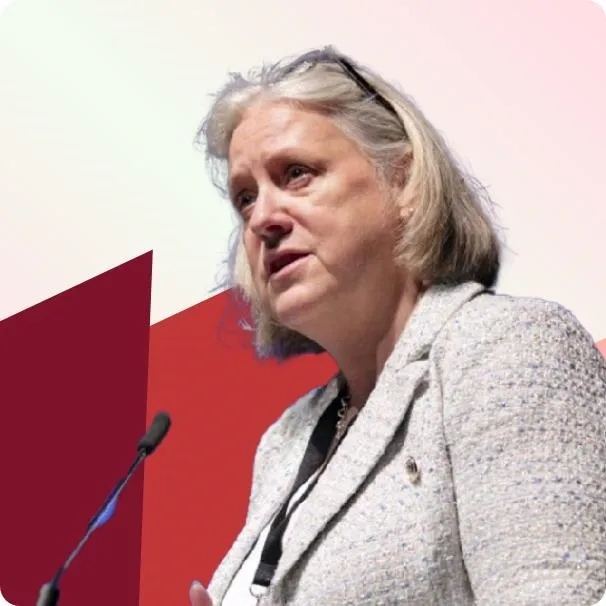


Session T3 : From Data to Decisions: Enhancing Project Tracking with Power BI
Discover how Power BI can elevate Project Controls by integrating schedule data from Primavera P6 to produce insightful S-Curves. This session explores practical methods for connecting Power BI to P6, outlines key stages in report development, and highlights real-world examples. Attendees will gain a clear understanding of Power BI's analytical and visualisation capabilities, and what is required to work effectively with P6 data. Whether you're aiming to improve reporting efficiency or support better decision-making, this session will demonstrate how Power BI can unlock the full potential of your project data.
Speaker :


Session T4 : Powering Project Success: How Smarter Cost Controls Help You Deliver Ambitious UK Projects
In today’s complex infrastructure landscape, project success depends on more than accurate budgets — it requires a clear understanding of your organization’s cost control maturity and how to advance it. In this session, Contruent’s Karl Vantine introduces a practical, results-driven Cost Maturity Model designed to help UK project teams measure their current cost control maturity, identify high-impact areas for improvement, and implement changes that translate directly into time and cost savings. Unlike generic models, Contruent’s approach goes beyond theory to provide actionable guidance across key inputs such as schedule, change management, and field progress tracking. Attendees will leave with a framework they can immediately apply to strengthen cost control processes, improve forecasting accuracy, and demonstrate measurable business value and ROI — ultimately helping teams deliver their most ambitious projects on time and on budget. This session is ideal for project controllers, cost engineers, and stakeholders seeking a framework for tracking improvements in maturity and linking those improvements to quantifiable business value and return on investment.
Speaker :


Session T5 : From Complexity to Clarity: Transforming Project Control at Scale with NATS and TPG
Join NATS and TPG to explore how one of the UK’s most safety-critical organisations transformed project delivery and portfolio governance at scale. Under pressure to improve visibility, compliance, and investment decision-making, NATS replaced fragmented systems with an integrated solution built on Microsoft Project Online, Power Platform, and TPG’s ProjectPowerPack and PSLink®. This session shares how the transformation enabled greater standardisation, automated reporting, and more strategic alignment—empowering PMOs with real-time insights and repeatable processes. You’ll hear from NATS and TPG The Project Group about the journey, challenges, and outcomes—focusing on business value and supporting tools. Ideal for PMO leaders, portfolio managers, and transformation leads seeking to simplify complexity, enable better governance, and deliver measurable results across project environments.
Speakers :



Session T6 : From Projects to Portfolios: Practical Steps to Scale Your Risk Management
Only 12% of risk professionals have a portfolio-level risk structure—leaving most organizations exposed to blind spots that traditional project-level risk processes can't catch. If you're managing risk one project at a time, you're not alone— but there's a real opportunity to improve visibility, drive consistency, and deliver more strategic value by shifting to a portfolio-level approach. This session is for risk professionals who know their process needs to evolve but aren’t sure where to start. We’ll cover practical steps to shift from reactive, spreadsheet-driven tracking to a more scalable, connected risk framework. You’ll learn: - Why project-level risk reporting falls short at scale - The essential building blocks of portfolio risk management - How top programs structure, streamline, and automate their risk workflows - Steps to make the transition without breaking what already works If you’re ready to move past silos and see the bigger picture, this is where to start.
Speaker :


Session T7 : The Master Assumptions Register - A single source for estimators, planners and risk practitioners
Have you ever found yourself navigating a project where estimates, schedules, and risk registers all told a different story—each shaped by conflicting assumptions? What happens when planners, estimators, and risk engineers operate in silos—each building their version of the truth without a shared foundation? In major construction projects, assumptions underpin key project controls activities—shaping estimates, driving schedules, and informing risk registers. Despite their critical role, assumptions are often dispersed and inconsistently managed, leading to misaligned expectations, duplication of effort, and unmanaged risk exposure. This paper proposes the use of a Master Assumptions Register (MAR) as a central, structured tool to consolidate and govern assumptions across estimating, planning, and risk management functions. The MAR enhances collaboration and understanding across project disciplines by serving as an input to the estimate, plan and risk register. Within the project controls framework, the MAR improves transparency, promotes consistency, and strengthens the traceability of key project inputs. It enhances coordination across disciplines, reduces the risk of oversight, and supports more robust scenario planning and risk response strategies. By integrating the MAR into standard project controls practices, organizations can improve the reliability of project baselines, increase stakeholder confidence, and enhance overall project resilience. The paper outlines the conceptual foundation for the MAR, explores practical implementation considerations, and highlights its value through worked examples in large-scale construction projects. If selected to speak the presentation will tackle: The challenges arising when project disciplines operate in silos and the hidden pitfalls of inconsistent assumptions. An exploration of the Master Assumptions Register (MAR) (show and tell with diagrams) A walkthrough of how this would be applied in context, illustrated through a theoretical example applied to a real world project. Key Takeaways: Integration Across Disciplines: Learn how a unified assumptions register can enhance communication and collaboration among project teams. Enhanced Decision-Making: Discover how aligning assumptions across disciplines leads to more accurate estimates, realistic schedules, and effective risk management.
Speakers :



Session CC1 : This Is Total Project Control: Connecting Management Dashboards Directly to the Work Front Reality
Imagine seeing a delay to a key project milestone on your high-level management report and being able to drill down there and then to the notes and images from the construction supervisor on the site showing exactly what is causing the problem. This session, presented jointly by Laminar Projects and Shape Construction, will showcase real examples of how we connect the work front directly to the Project Controls function. And in doing so connect the management team with the site team and their realities. Learn how Shape’s intuitive, field tools enable site teams to effortlessly capture highquality, timestamped data on progress, resources, and issues - creating indisputable data trail for everything happening on site. You’ll see how Laminar Projects connects site data with schedule and cost info, making it easy to spot the cause when things go off track. This is how automated, real-time reporting in construction phase is supposed to be – driven by the real information directly from the people on the site
Speakers :



Keynote Panel discussion (@ Number Nine) : Formation of the National Armaments Director (NAD) Group and the opportunities that affords Project Delivery in Defence
A panel discussion on the formation of the National Armaments Director (NAD) Group and the opportunities that affords Project Delivery in Defence.
Speakers :




Session CC3 : From Standardised Processes to AI: How Contract Data Advances Kier's Digital Transformation
Built Intelligence and Kier share a practical route from standardised contract processes to AI-enabled portfolio insight. Starting with“where we are now" - how structuring contract data creates reliable management information and consistent delivery. Next, "where we're going" - integrating contract data across systems to unlock portfolio-level analysis and decision-making. Finally, "how we'll get there" - a pragmatic AI roadmap covering data and governance for LLMs and interoperable AI agents. Expect real examples from FastDraft, the role of common data standards, lessons from Kier's digital journey, and an interactive poll to benchmark your maturity. You'll leave with a clear checklist to advance your own roadmap - without the hype.
Speakers :



Session CC4 : System Dynamics Modelling to Understand Disruption, Rework, and Delay
Construction projects are complex systems where disruptions can trigger cycles of rework, productivity loss, and cascading delays. These challenges often lead to cost overruns, schedule setbacks and disputes, issues that derail even the most carefully managed projects. This presentation explores strategies for proactively identifying risks, mitigating disruptions, and enhancing project outcomes
Speaker :


Session CC5 : Commercial Controls in Alliances and JVs working on Mega Projects
How do you manage large data sets on newly established entities that have to mobilise and integrate 1,000s of people quickly across multiple organisations? This presentation will explore the complexities of establishing systems and processes for mega projects that are being delivered as alliances or joint ventures. Drawn from experience on over USD100bn in infrastruture delivery on multiple continents, Mark will explain how UniPhi's transaction transparency has allowed organisations like Arcadis, Jacobs, GHD and AECOM provide audit ready commercials to their clients while also monitoring bottom up performance metrics to assist management power forward the benefits of such alliances.
Speaker :


Session CC6 : Harnessing the Power of our Data: Enhancing Project Management through Advanced Analytics and Visualisation
In today's rapidly evolving world, data has become a crucial asset for organisations across industries. However, managing vast amounts of data and turning it into actionable insights remains a significant challenge for projects and their project control teams. This is particularly true in the context of large infrastructure project organisations, where data can be scattered across various sources and systems. This presentation shares our journey from traditional reporting methods to implementing a data-first strategy that transformed the way we manage and analyse project data in Network Rail's Wales & Western Region. Our organisation manages over 2,700 miles of railway in Wales, Thames Valley, West of England, and the South-West Peninsula, with a £2.5 billion infrastructure renewal and enhancement program over a 5-year period. As part of the Advanced Analytics team, we led on modernising the reporting & analytics approach, developing systems, dashboards, and visualisations to enable project teams to access their project data centrally, review trends, and gain valuable insights into performance. In this presentation, we will share real-world case studies addressing specific problem statements and reveal how simple but effective technological solutions have transformed our organisation, including: 1. **Periodic Business Review Pack** A set of consistent self-service reports for the region, saving over 12,000 annual hours through streamlined access to project data. These reports eliminate the need for manual Excel generation and provide a standardised approach to performance reporting across projects and regions. 2. **Commentary Collector App** Communication and sharing of progress updates between teams was often cumbersome due to manual liaison and version control issues. We addressed this by implementing an commentary collection method, which eliminated these issues and saved over 4,800 hours annually. 3. **Change Control Database** Managing change papers manually was a time-consuming process for our project teams. We addressed this challenge by creating a consolidated database for all change papers, which significantly reduced manual effort and saved over 9,700 hours annually. This centralised solution improved the tracking and management of change requests across projects and ensures greater transparency and efficiency. 4. **Phase Readiness App** Ensuring that projects are ready for the next phase is crucial in maintaining project momentum. This app enables teams to review project readiness efficiently and effectively, allowing them to address potential issues proactively and save time. 5. **Data Mesh** To support this transformation, we adopted a back-end data mesh approach. This approach ensures that data is consistent and accessible across the organisation while allowing for flexibility and scalability. By democratising data access and enabling self-service analytics, teams can now focus on addressing project issues rather than dealing with errors or inconsistencies. Join us as we discuss these case studies in detail, sharing practical knowledge that can be directly applied to your own projects. Through this educational experience, you'll gain valuable insights into the benefits of a data-first strategy and leave with actionable takeaways that you can implement in your organisation.
Speakers :






Session CC7 : Generative AI in Capital Projects: Commercial Strategy, Contracting Risks, and Governance
The rapid advancement of Generative AI and Large Language Models (LLMs) is beginning to transform how capital projects are procured, contracted, and commercially managed. As owners, contractors, and designers navigate complex project environments, these technologies are reshaping commercial strategies—accelerating document generation, improving contract analysis, and enhancing risk visibility across the project lifecycle. However, the commercial and contractual implications of AI adoption cannot be underestimated. This presentation examines how AI intersects with procurement frameworks, contract formation, and administration, highlighting emerging issues such as liability, intellectual property, data privacy, and the enforceability of AI-assisted deliverables. It will also address the need for clear allocation of responsibilities and the importance of integrating AI considerations early in contract strategy and negotiations. By the end of this session, project delivery professionals will be better equipped to understand the implications of AI adoption on their commercial strategies, manage related risks effectively, and ensure that contracts reflect the realities of an AI-enabled delivery environment.
Speaker :


Session B1 : Journey Through Skills Development
Navigating today’s fast-moving and complex environments means organisations are constantly challenged to find, grow, and deploy the right skills at the right time. In this session, we’ll share Babcock’s journey, starting with a simple question: How well do we understand our people’s capabilities? Drawing on real experience, we’ll explore how Babcock uses Actionable Intelligence to make sense of workforce data and turn it into meaningful development opportunities. But this isn’t just about systems and metrics, it’s about people. We’ll talk openly about the human side of skills development; the barriers, the awkward conversations, and the moments of growth. If you’ve ever wondered how to make performance appraisals more useful, how to turn feedback into action, or why development conversations can feel so difficult, then this session is for you.
Speaker :


Keynote Panel discussion (@ Number Nine) : Formation of the National Armaments Director (NAD) Group and the opportunities that affords Project Delivery in Defence
A panel discussion on the formation of the National Armaments Director (NAD) Group and the opportunities that affords Project Delivery in Defence.
Speakers :




Session B3 : Business Intelligence for Cost Engineering
Business Intelligence (BI) for Cost Engineering The presentation aims to show a case study of a BI process for cost engineering. The process is divided into several steps: Standardization, Categorization, Normalization, Configuration, BI Creation, and Dashboards/Reports. Standardization means that the database should be formatted or should always have the required info (columns) in the same format. The reason is that BI should be able to read data from different projects, and this is only possible if the database has the same format. Categorization (e.g., cost and schedule) aims to reflect your process (e.g. Project Control for a period). It means that the database could be composed of different sources, such as schedule (e.g., P6) and costs (e.g., SAP). Normalization aims to clean, convert, remove outliers, etc. Partial of this step could be done in BI or out of the tool. Configuration is the first step in the BI tool. In this case, it is Power BI because the case study is based on my experience, but it could be a different BI tool (e.g., Tableau). Configuration means preparing and transforming the database, such as removing columns or rows, creating new columns, deleting empty rows, etc. BI creation is the phase of creating the dashboard, and it is crucial to know the process and data that you are using. You should know what and how you show the data. This will allow you to decide what types of charts to use and what levels of information the drill-down should occur at. The outputs are the dashboards and reports. The Dashboards can be published and shared with your organization. There are several benefits to recommending Bis, such as time optimization, allowing the user to have a dynamic view to navigate through the data and get their conclusions, and questions. Finally, some applications and challenges will be exemplified and discussed. LinkedIn post shows the topic that will be presented: https://www.linkedin.com/posts/helber-cunha-macedo_bi-powerbi-costengineering-activity-7319292229271891968-uF6V?utm_source=share&utm_medium=member_desktop&rcm=ACoAAAvzG4ABEfQJ90MThnTj9nMONcG7UCEGp5g
Speaker :


Session B4 : Breaking Down Silos: How to Create True One-Team Culture with Your Supply Chain
Major construction projects are a complex orchestration of dozens of companies that must coordinate intricate, interdependent work. While general contractors often run highly disciplined internal processes, coordination can break down at the supply chain interface. The result: fragmented subcontractor planning, interface clashes, defensive behaviours, and lost efficiency. This session explores how to move beyond fragmented coordination and build a genuine one-team culture across the supply chain. Bringing senior voices from Mace, the panel will share strategies for improving visibility, aligning contractors and subcontractors, and replacing an "us and them" mindset with a collaborative, best-for-project approach.
Speakers :





Session B5 : Ethics for Projects Controls professionals: playing your part in project progress
This Presentation focusses on how Projects Controls professionals meet ethics in their everyday work. Whether working on UK or global projects, I will explain how and where PC professionals can play their part in improving project health. At the beginning, we will explore perceptions of ethics: I will ask the audience questions about situations that may have caused angst to lay the groundwork in an interactive way. They can then relax and listen whilst I will trace the history of ethics to the present day, and then explore the intersection between contract, law and ethics. We will then explore typical projects that Proj Con professionals work on. I will use Case Studies from my 25 years’ qualified practice to illustrate 21C dilemmas and challenges which are often experienced by Project Controls professionals, show how you solve these real-time real-life problems, and give you tips and tricks to take away so that you can play your part with confidence and competence. I will draw on established international research to explore and demonstrate the practicalities for those in project controls roles and responsibilities of adopting an ‘everyday ethics’ mindset: in doing business; acquiring and using key skills; being collaborative; and recognising an organisation’s ethical compass. I will then look-ahead to the ‘new workplace’: the emerging use of AI, its interface with ethics, and the areas where project controls professionals, and the wider industry as a whole, can have positive influence and meaningful impact. Finally, I will collate the evidence for how diversity makes a workplace more ethical, healthy and happy, and ultimately successful! I will give hope and instil renewed vigour on the approach to a new year.
Speaker :


Session B6 : Prospective Time Impact Analysis (TIA) Challenges and Enhancements
Prospective Time Impact Analysis (TIA) is a crucial tool in construction project delay management, enabling stakeholders to assess the potential impact of delay events before they occur. Despite its proactive nature, implementing TIA presents several challenges, including limited data availability, subjectivity in forecasted progress, and stakeholder resistance. The Association for the Advancement of Cost Engineering (AACE) International’s Recommended Practices, particularly RP 29R-03, provide essential guidance for improving the accuracy and credibility of prospective TIAs. Enhancements such as using contemporaneous updates, clear documentation of assumptions, logical network revisions, and consistent baseline schedules are emphasized. The proposed presentation will explore these key challenges and outlines enhancement strategies to ensure TIAs are methodologically sound, transparent, and defensible. By aligning TIA practices with AACE guidelines, project teams can improve delay analysis reliability, reduce disputes, and foster better decision-making throughout the project lifecycle.
Speaker :
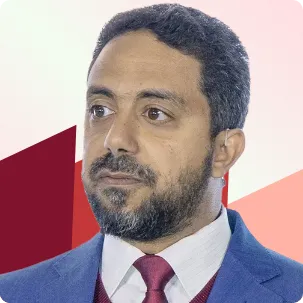

Session B7 : Decision Making for Mega Project Simplified.
Mega projects are characterised by their immense scale, complexity, and far-reaching stakeholder impact, often involving billions of dollars and spanning multiple years or even decades. While the potential benefits of such initiatives are transformative, they are equally susceptible to underperformance due to fragmented decision-making, competing priorities, and misaligned stakeholder expectations. This study seeks to address these challenges by simplifying the decision-making process and offering a structured, evidence-based framework to support more effective planning and execution. The research began with the identification of 295 individual factors influencing the performance of mega projects, gathered from a broad review of academic literature, project case studies, and expert input. Recognising that this volume of variables presents more confusion than clarity, the study employed Exploratory Factor Analysis (EFA) as a dimensionality reduction technique. EFA was instrumental in revealing latent structures within the data, grouping related factors into coherent clusters based on shared variance. This enabled the distillation of the initial 295 variables into a more manageable and interpretable set of 72 critical factors, each representing a meaningful component of project performance. To further refine these findings and prioritise the resulting factors, the study employed the Analytic Hierarchy Process (AHP). This multi-criteria decision-making method supports pairwise comparisons and calculates weighted rankings. AHP allowed us to incorporate expert judgment and stakeholder perspectives systematically, assigning relative importance to each factor based on both quantitative and qualitative considerations. This dual-method approach ensured that the framework was not only statistically sound but also contextually relevant to real-world project environments. The final framework organises the 72 critical factors into six temporal categories, reflecting different phases of the project lifecycle. This temporal dimension provides a practical lens through which decision-makers can assess and apply insights at the right stage, enhancing the timing and focus of interventions. Among the most significant findings of the study is the centrality of authentic collaboration and stakeholder relationship management as dominant predictors of project success. These human-centric factors transcend the conventional ‘tick-box’ methodologies that often reduce project governance to administrative formalities. Instead, they emphasise the importance of trust, alignment, and ongoing engagement in achieving meaningful outcomes. Notably, the research also demonstrates that competing priorities—particularly between resource optimisation and sustainability goals—need not result in compromise or conflict. With a structured decision framework supported by EFA and AHP, project teams can identify these tensions early, evaluate trade-offs fairly, and arrive at balanced and transparent solutions. This approach fosters a more civil, data-driven, and respectful discourse in boardroom settings, upholding professionalism while facilitating progress. The aim is to catalyse change in the mega-project domain. By transforming complexity into clarity and tension into dialogue, the proposed framework paves the way for more confident, timely, and collaborative decision-making, proving that even the most significant projects can be made more manageable, efficient, and human-centred.
Speaker :


Session I1 : Closing the Loop: Digital Information Management for ISO 19650-Compliant SMR Projects
As Small Modular Reactors (SMRs) emerge as a key low-carbon energy solution, managing project data in line with ISO 19650 is vital. This session explores how structured digital workflows can drive efficiency, reduce risk, and support safe, scalable SMR deployment. Through a real-world case study, attendees will gain insights into how ISO 19650 principles were successfully adapted to a nuclear project which earned praise from auditors, clients, and suppliers. We’ll unpack document hierarchies, BIM process mapping, and communication strategies that enabled secure, compliant data exchange. Whether you're pursuing ISO accreditation or refining your digital delivery, this session offers practical tools for high-security, complex environments. A dynamic presentation and interactive Q&A will highlight key challenges, lessons learned, and cross-industry applications. Attendees will leave equipped to elevate their information management practices and apply proven strategies to their own projects.
Speaker :


Keynote Panel discussion (@ Number Nine) : Formation of the National Armaments Director (NAD) Group and the opportunities that affords Project Delivery in Defence
A panel discussion on the formation of the National Armaments Director (NAD) Group and the opportunities that affords Project Delivery in Defence.
Speakers :




Session I3 : Navigating Risk in the New Era of Cost and Carbon Estimating
In today’s evolving construction landscape, balancing financial and environmental performance is no longer optional - it is essential. This session explores how modern digital tools are transforming project planning by embedding environmental metrics into financial decision-making. Learn how unified estimating processes, supported by resource-based data models, can improve transparency, reduce risk, and align with global standards. Discover how innovation, traceable data, and lifecycle insights are empowering teams to make smarter, more sustainable choices across the project lifecycle.
Speakers :




Session I4 : Frontier Firms Eat Spreadsheets for Breakfast: Project Controls in the Agentic Era
AI is already supporting project controls organizations with reporting, scheduling, simulations and risk management activities. But how far can it go? Will project controls organizations soon deploy AI workforces working alongside humans, or even replace human project controls professionals? Where are we on the path to the Agentic Era in Project Controls? What will it take to get there? What unique project controls challenges will require critical human judgment? This interactive session will explore technological, organizational, ethical and professional implications of the path ahead.
Speaker :


Session I5 : Delivering Excellence Through Diversity and Digitalisation
Join us for an insightful session where we explore how AtkinsRéalis is reshaping the future of project controls — not just through technology, but by putting people at the heart of the transformation. We will dive into how we are addressing the industry-wide skills shortage by broadening our talent horizons, moving beyond traditional recruitment channels, and embracing inclusive hiring practices. You’ll hear how digital innovation is helping us deliver smarter, faster, and more resilient outcomes — and how a diverse, empowered workforce is key to making it happen. Whether you're a leader, practitioner, or someone passionate about building high-performing teams, this session will offer real-world insights and practical takeaways to help you drive change in your own organisation.
Speakers :




Session I6 : Visual Earned Value Management (VEVM)
This presentation explores how integrating Visual Planning techniques with Earned Value Management (EVM) creates a powerful framework for construction project control. While Visual Planning enhances collaboration through accessible representation of project information, and EVM provides quantitative performance metrics, their combination addresses persistent industry challenges including schedule delays and cost overruns. We'll examine how this integrated approach—Visual Earned Value Management (VEVM)—transforms project delivery through enhanced accessibility of performance data, improved contextual understanding, faster issue identification, and more effective stakeholder communication. Case studies demonstrate significant improvements in schedule adherence, reduced cost overruns, and higher stakeholder satisfaction. Attendees will learn practical implementation strategies for this integrated methodology that balances analytical rigor with visual communication to drive superior construction project outcomes.
Speakers :



Session I7 : How to Measure Anything in Project Management: From Placebos to Proven Tools
For decades, project management has been caught in a paradox: while projects have grown in scale, complexity, and strategic importance, the ways we manage them have remained surprisingly qualitative—driven more by habit, ritual, and belief than by data and evidence. This session, based on the new book How to Measure Anything in Project Management by Douglas Hubbard, Alexander Budzier, and Andreas Leed (publishing in autumn 2025), presents a quantitative, evidence-based alternative. Drawing on a wide range of sources—including Oxford Global Projects' 22,000-project performance database, an international survey of project managers, numerous case examples from around the world, and decision science best practices—the book compiles what actually works in reducing risk and improving project success. The presentation will show: - Why many widely taught practices act as “analysis placebos”—methods that give the illusion of control without improving decisions. - How discovery-driven metrics (dashboards full of data with no clear decision link) can be replaced with decision-driven measurement: targeted, calibrated, and - value-focused. - How to apply methods like calibrated probability estimation, reference class forecasting, and decision models that reveal when more measurement is—or isn’t—worth the effort. - What the data shows about certifications, methodologies, estimation techniques, and AI: what helps, what doesn’t, and why. Attendees will leave with a practical understanding of how to make better project decisions under uncertainty, backed by transparent, tested, and often surprisingly simple tools. This is not about measuring more. It’s about measuring smarter. And that shift, from intuition to evidence, from tradition to impact, has never been more necessary. Whether you work in infrastructure, IT, public sector, or beyond, this talk invites you to rethink how measurement can become your most powerful decision-making tool.
Speakers :



Session G1 : Transformation in the public sector
whilst working at National Highways I was asked to lead a transformation programme, the focus was on delivering significant benefits to support the future delivery of Major Projects through stronger team work and better controls. I designed, led and deployed the programme over a 3 year period, over 1000 people with circa £1.4b of benefits. The design focused on 'people at the heart', enabling diverse teams, project controls tools and techniques to drive better outcomes, a key focus on improved governance and commercial awareness.
Speaker :


Keynote Panel discussion (@ Number Nine) : Formation of the National Armaments Director (NAD) Group and the opportunities that affords Project Delivery in Defence
A panel discussion on the formation of the National Armaments Director (NAD) Group and the opportunities that affords Project Delivery in Defence.
Speakers :




Session G3 : Exposing a Hidden Root Cause of Project Failure: 5 Things to Tackle Strategic Misrepresentation
Why do so many projects run over budget and slip out of control? One hidden factor is strategic misrepresentation, that's people applying pressure (political and power) to make the business case and key decisions work for them. Combined with bias's like optimism, it creates undeliverable commitments, adding stress and damaging reputations. In this session, Chartered Project Professional and Confluity founder Greg Krawczyk shares insights from behavioural science, project research, and two years of work with the APM Governance Interest Network. You'll learn to spot red flags of bias and misrepresentation, see why data alone isn't enough, and take away five practical steps to reduce the risk. From challenging optimism at decision gates to fostering psychological safety, this session will equip you to protect your project and elevate the role of project controls.
Speaker :


Session G4 : Lessons from the Frontline – Breaking into and Thriving in Project Controls on Major Construction Projects
Project controls is often called the backbone of big construction projects - but when you’re starting out, it can feel like a world of jargon, systems and spreadsheets that nobody really explains. In this session, we want to share what’s actually helped us find our way and thrive. You’ll hear two points of view: my own, as someone who moved fairly quickly into a risk role on a megaproject early in my career, and from a colleague with over 25 years of experience in risk management who’s seen the field change and grow over time. Together, we’ll talk about what it really means to understand the project lifecycle, why being known for clean data and good systems skills matters so much, and why communication isn’t just about sending out reports - it’s about making people listen and act. We’ll also share thoughts on staying useful when the pressure’s on, and why simply being curious can take you further than you might expect. Alongside these practical lessons, you’ll also hear reflections on emerging trends and where project controls and risk might be heading next. Our aim isn’t to give you a perfect roadmap - just honest insights from different stages in our careers, to help make project controls feel a bit less mysterious and a lot more rewarding.
Speakers :



Session G5 : Project X
Project X is a government/academic collaboration aimed at improving delivery of Public Sector projects. A team of researchers from different backgrounds and universities formed a collaboration to examine key aspects of project delivery, both in the UK and internationally. The research included interviews with leaders of major public sector projects in the UK and overseas, literature reviews and international case studies. Mike will discuss the key findings from the project including the treatment of different types of projects such as fixed goal and moving goal projects, questions that should be posed at the three most important stages of the project lifecycle and benefits realisation. He will focus on actions that were most likely to lead to positive outcomes.
Speaker :


Session G6 : Reimagining project assurance using data analytics and AI
Since project assurance first emerged in the mid-90s as a discrete aspect of project management practice it has ballooned beyond recognition. Every project issue or failure seems to have resulted in a corresponding increase in project assurance leading to a disproportionate level of checking. Through excessive checking, activities designed to provide “confidence” can often reduce the team's ability to perform. This can cause a project team to arrive at the next gate less prepared, which may then trigger more checks and a death spiral of "checking over doing". Andy will share a different furture, applying ideas from other domains such as the automotive industry, that have less assurance through increased controls - and that are autonomous and almost 'always on'. Can we take the ideas from leane departure warning systems from our cars and apply them in a project context? Andy will argue that it starts with good data!
Speaker :


Session G7 : Navigating complexity in public sector projects
This light-hearted yet insightful session explores government project delivery through a fictional Defra themed major project—an ambitious initiative using drones. Drawing on real government standards and tools, the presentation walks through each stage of the project lifecycle, from initiation to closure, highlighting key controls, stakeholder engagement, supplier resilience, and lessons learned. With practical reflections, the talk reveals how structured delivery, adaptability, and continuous learning are essential—Attendees will gain a fresh perspective on navigating complexity in public sector projects while having a bit of fun along the way.
Speakers :



Pre Booked Delegates Only

Pre Booked Delegates Only

Mid-Morning Coffee Break @ Great Hall

Lunch Break @ Great Hall

Afternoon Coffee Break @ Great Hall

Awards Drinks Reception @ Lioness Bar (For Dinner Delegates ONLY )

Awards Ceremony and Black-Tie Gala Dinner @ Bobby Moore

Registration @ The Main Entrance

Introduction by :
Speaker :


Welcome & Opening Remarks by :
Speaker :


Keynote by : From controls control: understanding what matters
In the keynote speech I will use some examples from real projects illustrating how the control environment for each project is different and rarely simple.
Speaker :


Headline Partner Remarks by :
Speaker :


PD.4-C : Recent trends in the Middle East mega Projects, Challenges & Opportunities
With a concentration on the GCC area, what are the challenges we face in delivering mega projects In terms of the optimization of the supply chain, the characteristics of government-funded projects and opportunities offered by the digital transformation Especially when the world lives in the era of VUCA ( Volatility, uncertainty, complexity, and ambiguity )
Speakers :



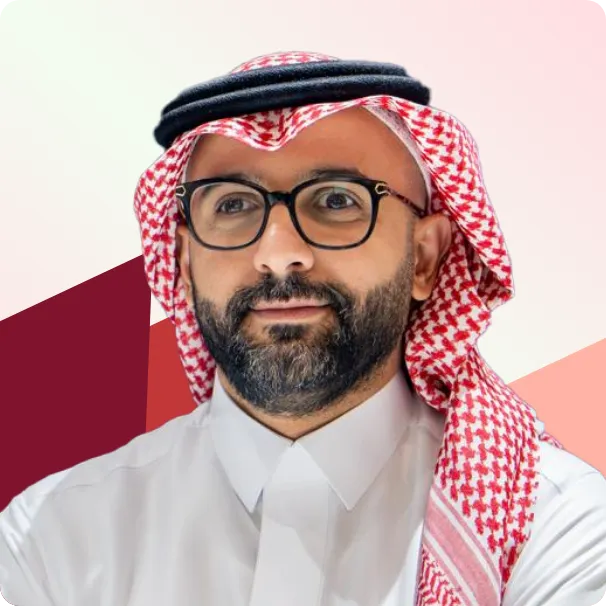

Session C2 : Driving Project Execution Excellence Through Digital Transformation:SBM Offshore’s Journey With Hexagon
"SBM Offshore has digitally transformed its project control function to establish a single source of truth for project and financial data, enhancing forecasting accuracy, aligning cash planning with performance goals in line with evolving business needs. In this session, we will explore SBM Offshore’s initial setup, the key motivations behind the transformation and the power of an internal admin champion and collaboration in securing project success. We’ll also discuss the phased approach adopted to ensure strong user adoption and measurable outcomes, the critical success factors driving the transformation and the added value of Hexagon’s EcoSys in shifting focus from technical challenges to business value. "
Speakers :



Session C3 : LFE: riskHive and Turner Townsend - ERM app deployments in UK Critical National Infrastructure
The riskHive Enterprise Risk Manager® cloud application has been selected globally by Governments and Commercial Organisations for multiple major infrastructure mega-projects and programmes, including airports, smart cities, nuclear, transport and national estates. Many of these deployments have been delivered in partnership with global consulting firms such as Turner and Townsend, with whom riskHive have a close working relationship and track record of delivering impressive immediate and downstream outcomes as part of the T&T Digital Controls Platform. This presentation focusses on the benefits delivered by three large ERM deployments in the UK National Infrastructure: 1. Babcock International Group / Cavendish Nuclear 2. National Highways 3. Heathrow Airport Limited Join us for this insightful session on 5th November at 12:05 in The Wembley Suite.
Speakers :





Session C4 : Integrating into the PMO Ecosystem
AWE's mission is to design and manufacture warheads and provide nuclear services to meet the needs of defence. The enterprise PMO ensures that AWE delivery is aligned to our strategic objectives and requirements, defined and balanced within constraints. It drives performance by providing high quality management information and insight to support strategic decision making. AWE's Infrastructure Projects Delivery (IPD), comprising Future Infrastructure Portfolio (FIP) and Future Materials Campus (FMC), is responsible for delivery of the infrastructure across a complex estate comprising science, engineering and manufacturing facilities as well as office locations. Over the coming years, FIP will protect the infrastructure that delivers our existing capabilities and deliver the infrastructure required to provide our future capabilities. To ensure FIP delivery remains aligned and coordinated enabling the management of our priorities, resources and dependencies, within the overarching AWE strategic objectives and organisational constraints, the Future Infrastructure team has established a Future Infrastructure PMO integrating with the enterprise PMO via the PMO ecosystem.
Speakers :



Session C5 : Industry Standards, Automation, and AI: Navigating the Shift from Automation to Intelligence
In the pursuit of smarter, more reliable project delivery, compliance with industry standards is essential. Deltek Acumen has long supported this goal—offering intuitive, automated tools for schedule quality assessments, forensic analysis, and risk modeling that simplify complexity and promote consistency. Now, Acumen is entering a transformative new phase. Its latest release introduces AI-powered capabilities that elevate automation to intelligence—delivering smarter inputs, faster outputs, and more informed decision-making. This marks the beginning of a new era, where automation evolves into true intelligence, empowering users to manage projects with greater precision, confidence, and control.
Speaker :


Session C6 : Collaboration and Control - the keys to successful delivery
How do you ensure successful delivery in all stages of a project? This session will get back to the roots of delivering certainty throughout the design, procurement and construction phases of projects and programmes of work across the globe. Skanska and Adept Management have collaborated on over 40 projects in the UK, US and Sweden in the last 20years. Whether delivering healthcare schemes in partnership with the NHS, a research facility containing the world's largest neutron source in collaboration with multi-national scientific organisations , commercial offices with multiple stakeholders and drivers, major refurbishment schemes involving heritage assets, major projects in live airports, custodial facilities to meet highly regulated standards or, most recently, large scale defence infrastructure in a live military environment, the approach is the same - you must closely collaborate with your team if you want to control your project. Presented jointly by Adept Management and Skanska, we will share some of the lessons we've learned over the past 20 years. We will draw from a range of case studies that have required our teams to overcome numerous challenges whilst bringing a consistent, predictable and controlled approach to delivery. One of our most recent collective successes has been on the largest UK Army infrastructure programme currently in delivery, the Vehicle Storage and Support Programme (VSSP). This facility is enhancing operational readiness and future capability through provision of modern, sustainable storage and maintenance solutions for the Army’s vehicle and equipment fleet. Consolidating a site of 56 outdated military buildings into 14 modern spaces has brought its challenges but at the most recent handover, on time, of the largest controlled humidity environment storage building, the root of the success has again come back to collaboration alongside project controls. Warren Webster, DIO MPP Programme Director – Army said: “It is always gratifying to celebrate a significant milestone for a complex construction project. The excellent progress we’ve made at VSSP has been achieved thanks to the collaborative effort of the DIO, Army, Skanska and Mace project teams, and their supply chain. We are proud to be delivering modern, sustainable infrastructure that will meet the enduring requirements of the Army’s fleet and benefit military personnel.” Terry Muckian, Skanska Executive Vice President, said: “Working within a live military environment presents unique challenges, but through close collaboration with site personnel, we were able to maintain their operations while continuing to deliver this significant infrastructure project on schedule. Our partnership with DIO, Mace, and our supply chain was instrumental in achieving these results. Additionally, through meticulous design and construction efforts, we have ensured that the vehicle storage building not only meets but surpasses the required air tightness specifications, enhancing its durability and operational efficiency.”
Speakers :



Session C7 : From Tool Obsession to People Leadership in Project Controls
Project Controls has never had more powerful tools — yet projects still fail for familiar reasons. The problem isn’t the software, it’s how we lead the people using it. In this session, we’ll explore why tool obsession distracts from the real drivers of success: leadership, learning, and collaboration. You’ll hear how leaders can model the behaviors they expect, build trust during change, and involve allies to turn resistance into momentum. Through relatable examples and practical ideas, we’ll consider how shifting focus from managing tools to leading people can create stronger, more resilient project teams.
Speaker :


Session P1 : Integrated Data Intelligence
A presentation on the strategy developed to improve how HS2 Ltd receive, align and systemise data from the supply chain to establish a integrated data intelligence capability. Through a cross functional approach with Commercial, Finance, Design, and Engineering functions, we will present how our analytical capability has been used to establish an intelligence hub of data analysis, assurance, and control that has transformed how HS2 can identify and assess variances, benchmark data across a multitude of facets, and undertake predictive analysis of outturn costs. Our three stage approach, which has been undertaken over the last 12 months, has realised the benefits of structured data that expands beyond the standard project controls requirements, to truly capture real time analysis that supports interventions and best for programme decision making, which provide true value for money assurance. The presentation will focus on the difficulties encountered by the project in the interrogation of performance across the project controls disciplines and assurance of cost, and the journey taken to obtain and align the extensive array of data that has been produced over the last 5 years since Notice to Proceed (NTP) that has enabled the project controls teams to take a huge leap forwards in their analysis and assurance capability. In addition, we will discuss how project level data has been used to generate programme level analysis that supports a broader approach to assurance, including determination of appropriate and reasonable expenditure through the delivery phase of our contracts.
Speaker :


Panel Discussion (PD.2-P) : Nuclear Delivery in Focus
Speakers :

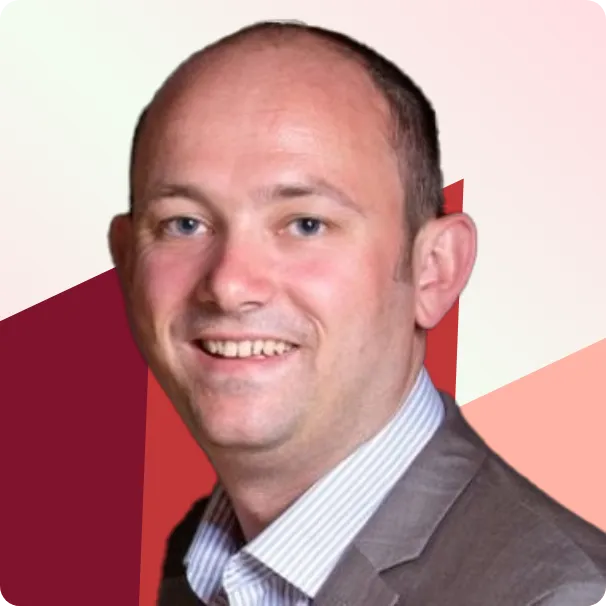




Session P3 : Lessons Learned in Megaprojects
I love presenting to other project professionals and would love the opportunity to do so at PC Expo. My dissertation topic for my MSc Strategic Management of Projects was based on my hypothesis that lessons learned, while ubiquitous, is never very effective in megaprojects and that people rarely act differently based on the learnings of others from previous projects. I have been asked back to UCL to present my findings to other masters candidates as it engages classrooms and drives conversation. I present on research I conducted on the variable definition of megaprojects, before discussing the concept of knowledge management and its nuances (including effective knowledge transfer through storytelling). Then, my research turns to the availability of knowledge and the varied availability of lessons, before exploring the mind of senior leaders and their likelihood (or not) of actually wanting to seek advice in the first place. I finish with a thought on heuristics and the value of instinct which poses a counter argument to Lessons Learned. Next the discussion turns to my findings gathered from interviews with senior leaders in megaprojects in the UK Finally I explore recommendations and thoughts on how to change for the better.
Speaker :


Panel Discussion (PD.5-P) : How to apply strong governance practices and navigate the challenges while safeguarding the significant investments that mega projects entail
Mega projects - whether in infrastructure, energy, technology, or urban development - represent vast financial commitments and complex stakeholder landscapes. This panel will explore how robust governance frameworks can be applied to ensure transparency, accountability, and strategic alignment throughout the project life cycle. Panelists will share insights on navigating regulatory, financial, and operational challenges while protecting investments and delivering value.
Speakers :



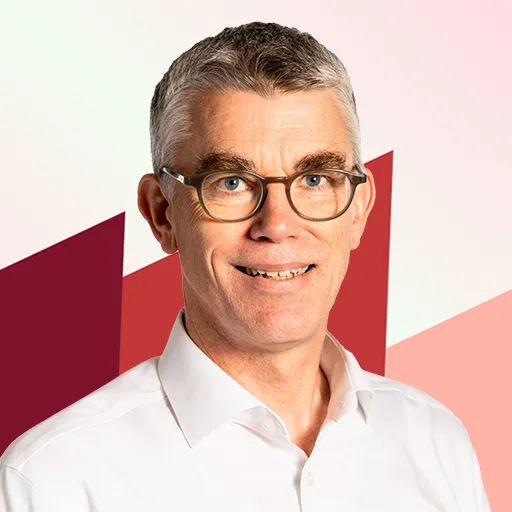

Session P5 : The HMT Green Book Era requires careful evaluation of analogical estimation methods because they present both useful benefits and potential risks.
The evolution of infrastructure from traditional road and rail to climate-resilient and low-carbon assets requires corresponding advancements in early-stage cost forecasting methods. The HM Treasury Green Book 2022 business case preparation process requires organisations to strike a perfect balance between speed, accuracy, and governance standards. The preconstruction phase continues to utilise Analogous Estimation as its primary method for predicting future project costs by comparing past projects. The technique remains effective in current complex conditions. Why This Matters The initial cost estimates in government and publicly funded schemes determine political commitments, public trust, and long-term value for money. But too often, cost forecasts are: 1) The cost forecasts rely on outdated benchmarks which have not been adjusted. 2) Lacking transparency on source data, 3)Unsuitable for non-standard, innovative projects. The research initiative aims to evaluate the application of analogous estimating methods for Standard and Non-Standard civil works through the Green Book framework. The Challenges We’re Addressing #Data Quality: What counts as a valid benchmark? What checks should be in place? #Normalisation: How should we adjust data across base dates, locations, and currencies? #ScopeMatching: How do we treat complexity, regulation, and delivery model differences? #Assurance: How do we present analogous estimates confidently under Five Case scrutiny? #ProfessionalJudgement: Where’s the line between informed adjustment and optimistic guesswork?
Speakers :




Session P6 : Why People Process and Tools should be integrated
Bringing People, Processes, and Tools Together: The Key to Project Success Join Paul Vogels from Primaned for an engaging talk on why true integration of people, processes, and tools is essential for effective project management. Through five real-world business cases — Common Data Environment, Risk Management, Lean Scheduling, Document Management, and Portfolio Management — Paul will demonstrate how technology can act as a catalyst to connect people and processes, driving collaboration, efficiency, and better decision-making.
Speaker :


Session P7 : Transforming Project Controls: A blended approach for transformation.
The world of project management is changing, according to the PMI pulse report 34% of project managers are reducing their reliance on predictive models (PMI, 2024), moving away from rigid, traditional approaches to more adaptive, hybrid methods. The implications for project controls are profound. Traditional controls were born in stable, linear industries. They evolved to enforce governance, not enable agility and effective, proactive decision making. As project managers shift towards more hybrid and adaptive approaches project controls must evolve too. Since their creation project maturity models such as P3M3 have helped multiple organisations transform. The approach of benchmarking, diagnosing problems, road mapping improvements and driving standardisation has long been used as a critical tool to drive transformation in even the most complex, regulated environments. However, in today’s fast paced, uncertain, tech influenced project environments, is measuring maturity still the most effective way to deliver transformations? This session will explore this question by pitching the strengths of P3M3 when used alongside a contemporary methodology, Lean Innovation. The presentation hosted by experienced professionals in both areas will discuss the benefits of both methodologies, introducing real life use cases and tangible evidence of successful delivery. Rather than presenting one as superior the presentation will open a balanced discussion and explore how they could be used as complementary methodologies for future transformation of project controls. The presentation will explore the use cases, and benefits of maturity models, including examples of successful P3M3 driven transformation. However, we will also discuss how the idea of maturity can sometimes hide dysfunction, and the pursuit of the next maturity level has the potential to reinforce static controls. In response to the need for more adaptive controls that suit the shift to a more hybrid approach, 73% of organisations plan to increase hybrid delivery (PMI 2024), and the prediction that 80% of project management tasks will be managed by AI (Gartner, 2019) we will propose an alternative methodology for transformation, Lean Innovation. Lean Innovation is a user-centred, experimentation driven framework that combines Lean, Six Sigma, Design Thinking, Agile and Change Management to enable teams to test and refine processes in short cycles, surfacing real problems and uncovering practical fixes. We will present through use cases how in volatile environments Lean Innovation builds momentum through quick wins, creates ownership through collaboration, and embeds a mindset of continuous improvement. Our final insight will discuss the possibility of using both methodologies as complementary tools not opposing philosophies. We will present the idea that when used together they will allow organisations to assess where structure is needed through P3M3 whilst using Lean Innovation to solve problems and embed the behaviours required to continuously improve. This presentation will provoke thought into how we measure progress and drive transformation of project controls. Attendees will leave with practical insights into when and how to apply both models, challenging their own assumptions about maturity.
Speakers :



Session M1 : Navigating the New Era of UK Water Infrastructure: Strategies for Large-Scale Projects
Navigating the New Era of UK Water Infrastructure: Strategies for Large-Scale Projects The UK water sector has entered an unprecedented phase of capital investment, marked by projects of significant scale and complexity. This shift represents a departure from traditional, incremental upgrades to ambitious programmes of Nationally Significant Infrastructure Projects. This presentation will explore the strategic approach to setting up a major infrastructure programme from initial concept through to the development phase. We will examine how the sector is adapting to this new paradigm, which requires different and innovative thinking, all in the context of changing regulatory frameworks, new consenting strategies and novel delivery models. Drawing inspiration from best practice industry publications, we will focus on the critical front-end setup of the Reservoirs Programme. Key topics will include: 1. Programme Architecture: Designing adaptable programs that can accommodate both certainty and change over a 10-15 year horizon. 2. Governance and Regulation: Examining emerging models for hybrid regulation and phased funding approval, considering the roles of Ofwat, DEFRA, and the Environment Agency. 3. Development Consent Order (DCO) Strategy: Integrating consent strategy into program design to mitigate risks and avoid late-stage complications. 4. Delivery Models: Exploring alliance models, integrator-led approaches, and program partnerships as alternatives to traditional procureme
Speaker :


Session M2 : Project Controls in the 21st Century’ Levelling up project culture
Change is the only constant—and yet somehow, we still manage to be surprised by it. In this energising and unapologetically honest session, Carolyn Browning and Simon Taylor pull no punches as they explore the elephant in the project controls room: cultural dysfunction. We’ll unravel why confusion, fear, and disconnection continue to sabotage delivery, and how modern project controls can empower people, processes, and priorities to align (without needing another RACI). Expect real talk, real strategies, and a few laughs along the way as we share insights from our dual-badged APM and CaSA publication Project Controls in the 21st Century—crafted with input from over 40 experts across industry. If you want to transform your data into decisions, build cultures that thrive in complexity, and actually enjoy talking about change... this session is for you. No buzzwords. No nonsense. Just project controls done properly.
Speakers :



Session M3 : The AI Hype Train Is About to Hit a Red Signal: A Reality Check for Major Programmes
This presentation contends that while AI delivers noticeable process efficiencies, it currently lacks the nuance, transparency, and verifiability essential for complex scenarios and demanding modelling assignments in major programmes. The session will highlight the superior capabilities of established tools (such as Safran Risk) and methodologies, demonstrating their effectiveness in intricate, high-stakes risk analysis. The aim is not to disparage AI, but to showcase a grounded, battle-tested perspective on where conventional approaches continue to excel.
Speaker :


Session M4 : Journey to High Performing Teams: People, Processes and Technology
Speakers :



PD.6-M : The Dark Side of Projects: Disruption, Delays, and Disputes
Disruption and delay are common sources of conflict in construction projects, often leading to disputes and strained relationships. This panel will explore the causes, consequences, and strategies for managing these risks, drawing on real-world experience to highlight how effective analysis and early intervention can support fair and timely resolution.
Speakers :





Session M6 : Professional Accreditation. The Power of Proof: Accreditation as a Career Catalyst
This presentation explores the pathway to professional accreditation through the Control & Skills Authority (CaSA), highlighting its role in ensuring quality, consistency, and industry recognition. It will outline the accreditation framework, key eligibility criteria, and the assessment of technical expertise, ethics, and practical competencies. Attendees will gain insights into how CaSA accreditation supports career progression, enhances professional credibility, and aligns individual skills with evolving industry standards. The session will also cover the benefits for employers, including workforce assurance and compliance with regulatory requirements. By demystifying the process, this presentation empowers professionals and organizations to leverage CaSA accreditation as a benchmark for excellence, strengthening both individual careers and the broader professional landscape.
Speaker :


Session M7 : Improving Cost Performance Index (CPI) in the Early Stages of Project Execution: A Streamlined Approach
Earned Value Management (EVM) metrics, particularly the Cost Performance Index (CPI), are critical for assessing project health. However, a common challenge observed across numerous projects was a trend of Earned Man-Hours (EMH) significantly exceeding Consumed Man-Hours (CMH) in the initial stages of the project (0-50% progress), resulting in an inflated CPI beyond the acceptable 0.95-1.05 range. Consequently, project status became unclear, decisions were based on unreliable data, and the ability to meet vital organizational KPIs was endangered This case study details a structured and collaborative approach undertaken to tackle the persistent challenge of inflated early-stage CPI reporting. Project Controls teams were grappling with the real-time pressure of explaining significant discrepancies between earned and consumed man-hours to stakeholders, leading to distrust in reported progress and difficulties in securing timely approvals for scope changes or resource adjustments. The artificially high CPI created a false sense of budgetary comfort, masking potential underlying inefficiencies and delaying crucial interventions. This situation not only strained the credibility of project forecasts but also made it increasingly difficult for Project Managers to proactively manage costs and make informed decisions regarding resource allocation, ultimately hindering their ability to maintain the project within acceptable financial boundaries and meet critical organizational performance targets Subsequently, targeted countermeasures were implemented on a current running Project Alpha. These included: 1) Removing one-time pre-project activities from progress measurement, 2) Optimizing man-hour allocation for generic recurring activities, 3) Revamping the Progress Measurement System (PMS) sheet, and 4) Expediting delayed timesheet bookings. The results of these interventions were significant. The CPI for Project Alpha improved dramatically from 1.9 to 1.09 within the first 40% of project progress, achieving an 81% reduction towards the ideal CPI of 1.0, exceeding the initial reduction target. This improvement is visually demonstrated through a comparison of CPI trends before and after the implementation of the countermeasures on Project Alpha To sustain these improvements and ensure broader impact, the lessons learned have been embedded within the organization through updates to the norm book in the Project Management system and the Progress Measurement Tool, ensuring application across all new projects. This initiative has also been presented to the leadership team for buy-in. The business outcomes of this Standardized approach demonstrate a pathway to accurately assess and rectify high CPI in projects, including those executed by consultants and vendors, marking a tangible step towards 'Efficient Execution.' While the specifics of timesheet booking and man-hour allocation are organization-dependent (with the FEED Office within PDO holding specific relevance), the core principles and methodology of this Standardized approach offer a valuable framework for organizations facing similar challenges in achieving accurate early-stage project cost performance. The indirect benefits include a precise understanding of project health, timely and effective control measures, data-driven decision-making, and an increased likelihood of project success
Speaker :


Session A1 : AI-First Project Controls: Lessons from Chevron, Anglian Water and the Transpennine Route Upgrade
In this session, Dev Amratia, CEO and Co-founder of nPlan, explores what it means to build an AI-first project controls and delivery function, where predictive and generative AI work hand in hand with human expertise to assure projects and portfolios continuously, not periodically. Drawing on case studies from Chevron, Anglian Water, and the Transpennine Route Upgrade (TRU), Dev will show how AI-first teams around the world are transforming how risk is managed, how decisions are made, and how confidence in delivery is achieved. Attendees will see how AI trained on more than 750,000 past project schedules is enabling project organisations to: Identify and mitigate risks months before they materialise Strengthen contract negotiation and collaboration through unbiased forecasts Assure hundreds of schedules in hours instead of weeks Rapidly model delivery scenarios to choose the most effective course of action The session will close with practical guidance for project leaders on how to unlock these benefits within their own organisations, covering the cultural, technical, and procedural shifts required to make AI-first project controls a reality.
Speaker :
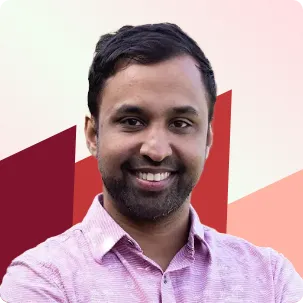

Session A2 : Schedule Assurance in the Age of AI
Speaker :

Session A3 : Classifying Schedule Activities with BERT & RoBERTa (A Case Study)
The standardization of schedule activities remains a critical challenge in project controls, requiring global consensus and sustained effort from institutions to enforce uniform practices. Yet, in reality, schedules vary widely in structure, terminology, and granularity—leading to inefficiencies, misclassification, and inconsistent reporting. This case study presents NLP (BERT and RoBERTa) as the transformative solution, enabling machines to "understand" and classify schedule activities even in the absence of strict standardization. By training these models on diverse project datasets, we demonstrate how AI can rationalize unstructured or non-standard activity descriptions (e.g., "Install HVAC" vs. "Mechanical Works – HVAC Installation") and auto-map activities to WBS or building components without predefined rules. This supports solving several issues in project controls, including soft logic assessment, 4D scheduling, and reports development. While institutional efforts for standardization must continue, NLP offers a significant bridge—turning today’s messy schedules into actionable, AI-classified data. This session will showcase the methodology, challenges, and roadmap for scaling this approach across the project controls ecosystem.
Speaker :


Session A4 : Revolutionizing Capital Portfolio Management with AI-Powered Predictive Analytics: The iCapital Intelligence Hub
Community Services at Aramco oversees a vast and complex capital portfolio, comprising a wide range of programs and public projects that have a direct impact in communities across Saudi Arabia, including iconic initiatives like the Aramco Stadium and OLFA Animal Welfare project. Portfolio monitoring between various projects and programs present project performance challenges such as limited visibility, inaccurate forecasting, and delayed decision-making. To address these issues, iCapital Intelligence Hub, was developed as a game-changing platform to transform capital portfolio management, driving efficiency, integration, and innovation. iCapital Intelligence Hub platform utilizes a customized Capital Performance Model, which tracks the entire life cycle of a Work Breakdown Structure (WBS) through tailored Key Performance Indicators (KPIs) and presents results through dynamic visualizations, charts, and graphs on a live dashboard. This automated dashboard provides stakeholders with real-time reporting and enhances decision making by leveraging advanced technologies, such as machine learning for predictive analytics, Robotic Process Automation (RPA), AI-powered chatbots and Power BI. Employing these limitless AI solutions optimizes portfolio performance while enhancing user interface and experience. For example, a built-in machine learning model enables accurate project forecasting and predicts the performance of active WBSs while a chatbot harnesses the power of advanced AI providing the user with responses to FAQs, offering guidance on manuals, and delivering personalized recommendations. Furthermore, an automated alert escalation system streamlines communication, enabling faster response times to emerging risks and improving stakeholder engagement. This has optimized resource allocation, strengthened overall project governance, and enhanced collaboration across multiple departments. Finally, iCapital provides a competitive edge by improving decision-making in capital portfolio management as demonstrated by the following: Integration: Seamlessly integrating multiple projects into a centralized data-driven ecosystem, eliminating data silos and providing a single source of truth for all stakeholders Efficiency: Reducing manual efforts by 10,100 man-hours annually and minimizing delays Innovation: Enhancing overall project performance by 50% and reducing at-risk capital projects by 75% Real-time Insights: Providing data-driven insights and enabling faster response times to emerging risks and improving stakeholder engagement The implementation of iCapital has been a resounding success, with initial indicators demonstrating the platform's ability to reduce overdue projects, which was a significant challenge prior to its implementation. Through the platform's predictive analytics and automated alert systems, potential project challenges were identified and addressed proactively. This was accomplished through a diligent team effort to configure and fine-tune iCapital settings to optimize performance. The results and benefits for the end-user have been significant, with improved efficiency and reporting, enhanced predictive capabilities, and better forecasting and resource optimization for higher- quality outcomes, cost savings, and increased stakeholder satisfaction. The platform's automated reporting capabilities have improved efficiency, making reporting faster, more accurate, and insightful, thereby enabling data-driven decision-making and reducing administrative burdens. A testament to the success of iCapital Intelligence Hub can be seen through corporate investment in adoption strategies and international awards. iCaptial earned ISO 42001:2023 Certification for AI-Management System (AIMS) and was selected as the winner of the 2025 Limitless Business Intelligence Dashboard Award presented at IBIS Conference in
Speaker :


Session A5 : AI for Efficient Project Controls
Many challenges in construction project management and project controls can be attributed to our inability to ingest massive documentation generated by various teams involved, and use of non-standard systems and tools. For instance, updating schedules monthly does not allow Project Managers (PMs) to manage issues and blockers actively and timely, resulting in recognition of delays after they have impacted a project. The current state of Artificial Intelligence (AI) technologies can be used to ingest complex construction documentation to make project management simpler and connected. Large Language Models (LLM) have the capability to ingest and extract relevant information from domain-specific documents, and then respond in natural language. However, LLMs have limitations like limited memory/context, which makes their use for real-world applications challenging. There is a need for experts in the project controls industry and AI to work together so that we can target specific problems that LLMs can handle efficiently, bypassing their limitations while being practically useful for the field. We will present and describe how combining the expertise of the speakers led to the development of a solution for construction project management and constrols that can easily fit into existing workflows in the industry while improving the efficiency of project delivery and decision-making. A recent report by McKinsey Global Institute highlighted that nine out of ten infrastructure megaprojects face cost overruns in excess of 70% of the original budget. Many of these cost overruns can be attributed to delayed handling of issues and blockers, lack of advanced planning to handle risks, and lack of experts and knowledge to execute stricter contracts. We will show a demo of how AI can help automate the key problem of integrating time, cost and scope in construction project management to enable teams to understand the impact of issues and blockers timely and take necessary steps before this impact becomes a reality. The solution will ingest various sources of documentation in construction projects produced by different teams, build connections between them, process them to automate specific tasks and allow users to refer to task-specific documents when needed. The solution will highlight the possibilities and limitations of current AI technologies, including LLMs, thereby inspiring the next generation of innovators to use these technologies effectively for addressing challenges in their construction projects. Our approach to tackling this issue demonstrates how AI can improve the efficiency of construction projects. This demonstration is founded on the combined three decades of experience of the speakers in construction project management, controls, and AI-driven problem-solving for real-world challenges. Our talk will be a combination of a presentation with a demo of how AI can automate a specific problem that affects all construction projects. We will cover facts and figures that justify our approach and identify areas for improvement.
Speakers :



Session A6 : From Tender to Project Controls: How AI Minimises Risk at the Source
Speaker :
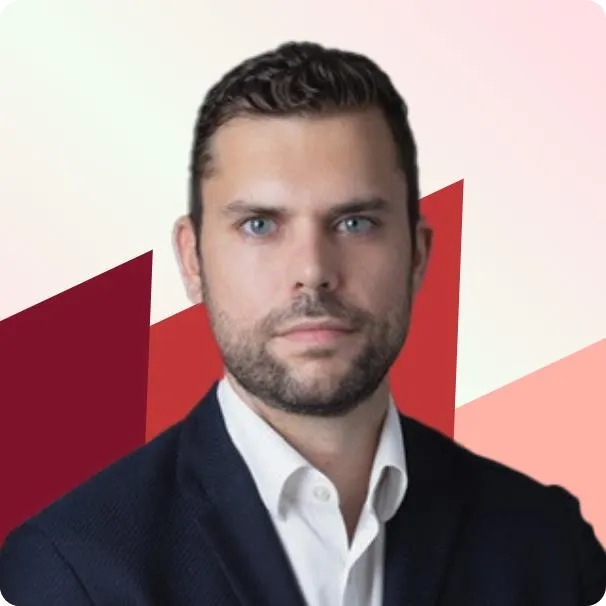

Session A7 : Innovative Digitalisation of the Projects' monitoring and Controls
The rapid evolution of technology has ushered in a new era for project management, particularly in the realms of monitoring and control. This presentation showcases the innovative application of cutting-edge technologies to enhance project oversight, optimize resource allocation, and ensure timely and budget-compliant delivery. Traditional project management methodologies often grapple with challenges such as data silos, delayed reporting, and reactive decision-making. However, the integration of advanced tools, such as Artificial Intelligence (AI), Machine Learning (ML), the Internet of Things (IoT), and blockchain, is transforming these paradigms. Digitilaised and automated tools are enabling predictive analytics, forecasting potential risks and deviations before they materialize. This proactive approach enables project managers to intervene swiftly, thereby mitigating issues and maintaining the project's trajectory. IoT devices, embedded within project environments, provide real-time data on progress, equipment performance, and environmental conditions, offering unprecedented visibility into these areas. This continuous stream of data feeds into sophisticated dashboards, providing a holistic and up-to-the-minute view of project status. Furthermore, blockchain technology is revolutionizing transparency and accountability. Its immutable ledger system ensures secure and verifiable tracking of transactions, contracts, and progress milestones, fostering trust among stakeholders. Digital twins, virtual replicas of physical projects, offer a simulated environment for testing scenarios, optimizing designs, and training personnel without impacting live operations. The innovative synergy of these technologies facilitates a shift from retrospective analysis to predictive intelligence, from manual reporting to automated insights, and from siloed information to integrated, transparent data flows. This technological integration not only streamlines monitoring and control processes but also empowers project managers with actionable intelligence, leading to improved decision-making, enhanced efficiency, and, ultimately, higher project success rates in an increasingly complex and dynamic global landscape.
Speaker :


Session CC8 : From Copilot to AI Platforms: Practical Steps for Smarter Contract Management
AI is reshaping contract and commercial management, but where do we start today? This session will focus on practical, achievable applications of Copilot and large language models (LLMs) within familiar tools like Microsoft 365 to streamline contract reviews, extract key clauses, and summarize obligations. We’ll explore how these capabilities can reduce manual effort and improve accuracy without major system changes. Then, we’ll look ahead to emerging solutions—such as AI-powered contract lifecycle platforms and integrations with procurement systems—that promise predictive risk analysis, automated compliance checks, and real-time performance dashboards. Attendees will leave with a clear understanding of what can be implemented immediately using existing enterprise tools, and what innovations are on the horizon to transform contract management into a proactive, data-driven discipline.
Speaker :


Session CC9 : Impact of Business to Business Relationships in UK projects
MIGSO-PCUBED is working with UCL researching the critical issues that affect modern projects. Key amongst these issues is the quality of B2B relationships. Research shows that senior leaders agree that B2B relationships are critically important for complex projects, but very few projects effectively manage this risk. Research carried out by MP in 2007 remains the definitive statement on how to develop effective B2B relationships. The insights from this research were new at the time and are still not well understood by business and project leaders. And these are: -Relationships are two-way. Relationships can’t be “managed” by one party unilaterally and they need to be jointly developed. -Relationships cannot be 3-way, 4-way, etc. For example, in a JV of three partners there are three two-way relationships, not one three-way relationship. -All relationships are different. You cannot use an approach that was successful between company A and company B for a relationship between A and company C. -There are only two types of B2B relationship: strategic and transactional. They are very different and don’t exist on a spectrum. -There are seven dimensions to any relationship and they can all be managed. It is rare in the UK for more than two of the dimensions to be managed effectively. -Four of the seven dimensions are dealt with transactionally or commercially with very little consideration of relationships. -The final dimension requires the relationship to be measured. Most people interviewed by the researchers felt that relationships could not be measured. Measurement is critical to ensure the actions taken are actually improving the relationship. New research carried out by MP and UCL over the last year has identified 5 key findings which need to be addressed on all major projects to create better relational alignment and increase the chances of project success. These findings are: -There is confusion on the understanding of strategic and transactional relationships and how they should be applied in a project. -There is a disconnect between the chosen contract and the desired relationship. -Relationships can be built before or after the contract is agreed, but in the latter case significant effort is required early in the project to ensure success. -Senior execs rely on interpersonal relationships rather than inter-organisational relationships. -Programmes have a greater chance of building powerful relationships than single projects. -There is a complete lack of relationship measurements on major projects. The research also revealed four best practice projects; projects which focused heavily on building relationships and objective evidence showed that they were outperforming the majority of UK projects. The projects are: Anglian Water @one Alliance, East-West Rail phase 2, Smart Motorways Alliance and Sellafield Project Programme Partners. Further research was carried out with these programmes to identify how they had applied the seven dimensions. MP has developed clear guidance for project controllers and all project leaders to help them apply the findings of the research in their projects. This is backed up by several case studies that demonstrate the benefit of adopting this approach to complex projects.
Speaker :


Session CC10 : Predictability vs. Flexibility Managing Construction Subcontracts Under Reimbursable Contracts NEC4 Vs Unit Price Contracts
The management of construction subcontracts differs significantly between the United Kingdom and the rest of the world, influencing cost predictability, risk allocation, and overall project control. Internationally, unit price contracts establish a structured approach where the Main Contractor assumes responsibility for engineering and quantity definition, while subcontractors commit to pre-agreed unit rates. This model enhances cost certainty for the Client, as construction expenses are largely predefined. Conversely, in the UK, NEC4 adopts a cost reimbursable framework that prioritizes flexibility but shifts financial uncertainty onto the Client. Construction Subcontractors are compensated based on predefined hourly rates rather than unit prices, shielding them from productivity risks. While this approach fosters collaboration and adaptability, it also increases the likelihood of cost overruns, making budget control more challenging. To address this, NEC4 incorporates a target price using a Pain/Gain Sharing Mechanisms: productivity gains generate shared savings (bonus), whereas overruns trigger a malus, distributed according to predetermined risk-sharing percentages. The accuracy of construction cost estimates is intrinsically linked to the maturity of engineering, as classified by AACEI standards. Estimates evolve from Class 5 (Order of Magnitude Estimate) , based on minimal engineering input (Conceptual) , to the Class 1 , requiring a highly detailed design. The progressive refinement of the Material Take-Off (MTO) throughout project phases (pre-FEED, FEED, and definitive engineering) plays a crucial role in reducing uncertainty and guiding contract selection. Through a comparative analysis of these contracting models, this presentation will explore their financial and operational implications, offering insights into optimizing subcontracting strategies based on project maturity and the client’s risk tolerance.
Speaker :


Session CC11 : Driving Project Control Excellence through Maturity Models: Practical Approaches for Sustainable Improvement
In today’s complex and fast-paced environments, establishing robust project controls is no longer optional. It is fundamental to project success. However, many organisations struggle with assessing their current capabilities and defining a structured path for continuous improvement. This is where maturity models such as P3M3 (Portfolio, Programme, and Project Management Maturity Model) provide invaluable insight. In this masterclass, I will explore how maturity models serve as a strategic tool to baseline, benchmark, and systematically improve project controls practices across the enterprise. I will focus on P3M3 as a widely recognised and extensively applied framework that evaluates maturity across multiple dimensions, including governance, risk management, cost control, scheduling, and resource management, and helps organisations identify both strengths and improvement opportunities. I will begin by demystifying maturity models, outlining the key components and benefits of frameworks such as P3M3, CMMI for Services, and OPM3, with a focus on their relevance to project controls. Attendees will gain a clear understanding of how maturity assessments work, including common methodologies for data collection, stakeholder engagement, and evidence-based scoring. Drawing from real-world case studies, I will demonstrate practical approaches to planning and executing a maturity assessment. Critical success factors, such as leadership buy-in, stakeholder communication, and aligning assessments with organisational goals, will be discussed in depth. Participants will learn how to interpret maturity model results to develop actionable roadmaps that prioritise improvements in a structured, scalable way. An essential part of this session will focus on how maturity models support organisations in building the strong foundations necessary for advanced capabilities, such as automation and artificial intelligence (AI). While many organisations aspire to leverage these technologies, reaching a state of readiness requires robust governance, high-quality data, and consistent delivery practices. These areas are directly addressed through a structured maturity improvement approach. I will also cover key pitfalls to avoid, such as conducting assessments as isolated activities without follow-up actions, and discuss techniques for embedding maturity model insights into strategic planning, training programmes, and governance frameworks to ensure sustainable improvement over time. By the end of the session, participants will have a practical toolkit for initiating project controls maturity improvements. Whether attendees are from organisations beginning their journey towards structured project controls or from mature organisations seeking to refine and optimise their processes, they will leave with actionable knowledge to drive tangible benefits, improve project delivery outcomes, and enhance overall organisational performance. This masterclass is ideal for executives, project controls professionals, PMO leaders, project and programme managers, and organisational change practitioners who are committed to building stronger, more resilient project delivery capabilities.
Speakers :



Session CC12 : AI in Contract Management
Richard will explore current use cases in the application of AI capabilities in the context of contract management. What capabilities are out there, what 'snake oil' to watch out for, and real use cases to show how nPlan's clients have been using AI to undertake their contract management responsibilities.
Speaker :


Session CC13 : Reflections of a Recovering Risk Manager - Whispers, Blind Spots & Big Saves: Risk Leadership in Action
Risk Managment is often dismissed as bureaucratic and box-ticking. In this talk, Danielle reframes it as a driver of action, influence and impact. Drawing on experience from multibillion-pound programmes, she will show how dynamic risk management can reshape project delivery and unlock multimillion-dollar savings, demonstrating how risk in motion creates tangible results. She explores the role of the risk leader as a trusted advisor - building credibility, influencing executives, and embedding lessons learned into decisions. With a focus on people, not just process, Danielle highlights how curiosity, psychological safety, and deep engagement across projects foster diversity of thought, surface hidden blind spots and empower teams to act. Delegates will leave with practical insights on transforming risk from compliance to catalyst - enabling better outcomes, stronger decisions, and lasting improvement.
Speaker :


Session CC14 : Building v Buying a Project Team for Innovation Delivery - Three Lessons from Energy and Digital Transformation to achieve outcomes and manage risk
The build versus buy decision is often treated as a procurement exercise, but this approach can expedite project failure. In innovation delivery, commercial approaches are a strategic lever for managing uncertainty and driving progress. This session draws on three lessons from large-scale energy and digital transformation projects where the stakes were high and delivery models had to perform under real pressure. It explores how smart team design, targeted capability building and well-structured partnerships can unlock innovation without losing strategic control. The talk explores how combining internal strengths with external expertise can create adaptive, resilient teams that deliver outcomes at pace. Through real examples, practical frameworks and honest reflections from complex projects, the session offers a fresh way to approach a familiar dilemma for project leaders: how to build project teams. Gain insight into how this critical choice impacts delivery performance and learn how to make smarter, more confident decisions for complex innovation programmes.
Speaker :


Pre Booked Delegates Only

Pre Booked Delegates Only

Mid-Morning Coffee Break @ Great Hall

Lunch Break @ Great Hall

Afternoon Coffee Break @ Great Hall

Evening Social offering final opportunity to network with pint of beer, wine and soft drinks @ Exhibition Hall (Open to ALL except Special Limited Ticket Holders)
 United Kingdom
United Kingdom
© Project Controls Expo 2025. All rights reserved







